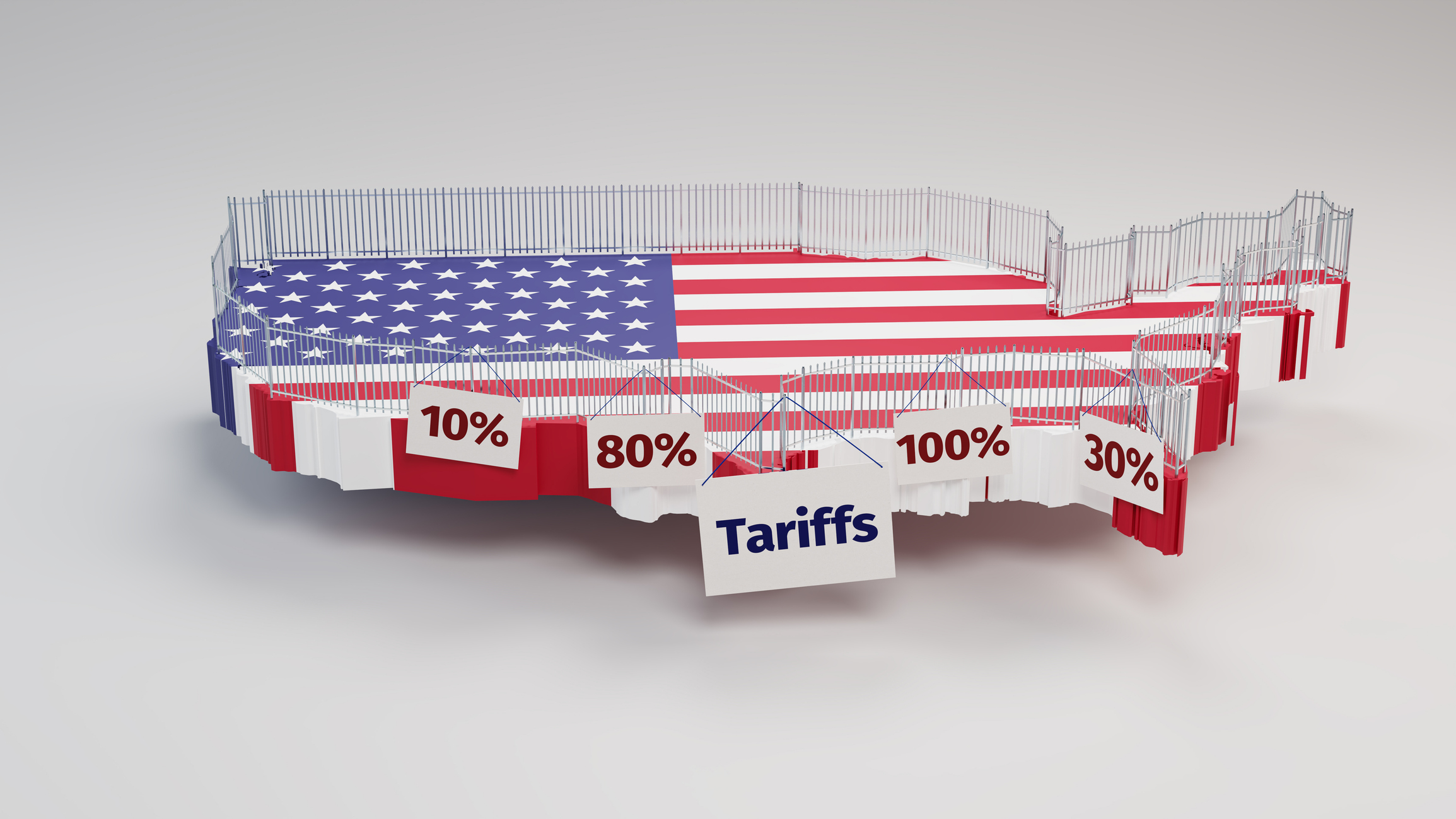As Foreign Policy Battles Ramp Up, is the U.S. Defense Industry Ready?
As the threat landscape heats up, this special issue of the Kiplinger Letter reviews the challenges facing the defense industry.

To help you understand what is going on in the defense industry and what we expect to happen in the future, our highly experienced Kiplinger Letter team will keep you abreast of the latest developments and forecasts (Get a free issue of The Kiplinger Letter or subscribe). You'll get all the latest news first by subscribing, but we will publish many (but not all) of the forecasts a few days afterward online. Here’s the latest…
America still makes the world’s most advanced weaponry. But as the threat landscape changes, a concern arises. Can we make enough of it, quickly enough to respond to a major foreign policy crisis? Our recent track record is mixed.
America’s current foreign policy is one of escalating great-power competition with China and Russia. This includes not just vying for power and influence, but increasingly, aid for combatants facing off against each other on the battlefield. Washington’s support for Ukraine is emblematic of the problems it now faces, as Kyiv continues to defend its territory nearly two years after Russia’s invasion. The conflict has drained U.S. arms stockpiles. According to one estimate in July of this year, it could take more than five years to replenish U.S. supplies of ammunition, and even longer to boost production of Stinger and Javelin missiles. That timeline may extend even more now that Uncle Sam is also increasing military aid to Israel to assist in its campaign against Hamas militants in the Gaza Strip.

Sign up for Kiplinger’s Free E-Newsletters
Profit and prosper with the best of expert advice on investing, taxes, retirement, personal finance and more - straight to your e-mail.
Profit and prosper with the best of expert advice - straight to your e-mail.
Russia, meanwhile, has managed to maintain its own missile production, despite sanctions, keeping the conflict in Ukraine at a bloody stalemate and sapping America’s will to help. America remains the world’s most important supplier of military hardware, accounting for 40% of global arms exports. This status gives the U.S. influence, supports domestic manufacturing jobs and defrays the cost of weapons development. But it also demonstrates how easily our defense industrial base may be overextended when conflict disrupts the status quo and requires arms manufacturers to do more.
The ultimate question is whether the U.S. is prepared for conflict with China, particularly if Beijing decides to invade Taiwan. Once a distant possibility, the invasion may now come as soon as 2025, per U.S. military officials, though doubts remain about China’s ability to launch the largest amphibious assault since D-Day.
Beijing boasts the world’s second-largest arms industry, behind only the U.S. Official Chinese military spending has nearly doubled over the past decade, to $224 billion, and may actually be even higher. Senator Dan Sullivan (R-AK) has said that the Pentagon actually puts China’s military budget at around $700 billion, not that far off from America’s roughly $800 billion in annual defense spending. Beijing also gets more bang for its buck because wages and other costs are so much lower in China than in the U.S. Some studies show the purchasing power of China’s overall defense budget is 60% higher than America’s dollar equivalent.
China has long excelled at arms production when it comes to quantity, now boasting the world’s largest navy at 355 ships and counting. That may be enough to beat the U.S. in a direct conflict: One survey of naval history found only three cases where technological sophistication was more important than numerical superiority. But, increasingly, Beijing is catching up in quality as well. Chinese shipyards completed the country’s first indigenously produced aircraft carrier in only three years, one month and seventeen days — the shortest time of any country post-World War II. China has also narrowed one of America’s few major naval advantages: Submarines. Once reliant on noisy diesel subs, China now boasts several stealthy nuclear variants and has constructed a massive underwater sensor network to track U.S. submarines. To keep pace with China, Washington will likely need to make some changes.
Shipbuilding perhaps best illustrates how far the U.S. has fallen behind. In the past two years, China has grown its navy by 17 ships, a number that would take U.S. shipbuilders six years to achieve under current conditions. A single Chinese shipyard in Huludao can produce more ships and submarines in one year — both civilian and military — than the U.S. has launched since 2014.
U.S. vessels also tend to suffer from enormous cost overruns. On average, a new first-in-its-class ship costs 40% more than Uncle Sam initially estimates.
Even submarines, a rare source of American naval strength, are difficult for the U.S. to build punctually. U.S. shipyards produce fewer than two nuclear subs per year, with efforts to increase production continually pushed back. Plus, officials have committed to providing Australia with nuclear subs, further straining the sector.
But trouble is afoot in other areas of the defense industrial base as well. Lockheed Martin has pushed back plans to double the output of Javelin antitank missiles by 2024 to 2026, following a series of production issues. Similar problems will delay the delivery of Boeing Harpoon antiship missiles to Taiwan, first announced in 2020.
Even in cases where improvement may be possible, willpower is a problem. The Army has a $3.1 billion plan to improve output of 155 mm artillery ammunition, from 14,400 rounds per month prior to the war in Ukraine to roughly 100,000 rounds per month. But the proposal is entangled in congressional debates over Ukraine aid.
The good news: The Pentagon has taken steps to address these problems.
One with potential short-term impact: Greater use of multiyear procurement, which allows the Department of Defense to lock in bulk purchases of weapons over a timeline of three to five years and ensure defense contractors have sufficient incentive to ramp up output. The aim is to address defense industry concerns that Congress will withdraw funding, leaving manufacturers with excess capacity to manage. So far, lawmakers have OK’d multiyear procurement for 17 different munitions. These range from the Guided Multiple-Launch Rocket System — used to great effect in Ukraine — to the Joint Air-to-Surface Standoff Missile, expected to play a key role in any conflict with China. Use of multiyear procurement will keep growing, with Beijing in mind.
Policymakers are also investing in vital sectors, such as critical minerals, with the goal of reducing the defense industry’s dependence on Chinese inputs.
The bad news: This still may not be enough for the U.S. to beat China, which boasts another crucial advantage: A robust civilian manufacturing sector. As a result, Beijing has a much deeper pool of companies and skilled workers to draw from as it tries to build the world’s most powerful war machine.
The U.S., by contrast, has seen several important supply chains wither in recent decades, which has coincided with growing costs and decreasing efficacy for its weaponry. What Washington likely needs is more industrial capacity, at the ready for production to surge if war breaks out with China or another country.
One idea is to pay defense contractors, which currently keep operations as lean as possible, to build more factories and assembly lines that can be quickly put into service. The problem, as always, is cost. Defense spending is currently only 12% of federal outlays and roughly 3% of GDP, close to the historic lows of the 1990s. But unlike the 1990s, government debt is rising precipitously. Uncle Sam has managed to avoid many consequences because of low interest rates. But the higher rates climb, the more Congress will need to make tough choices on what spending to prioritize.
This forecast first appeared in The Kiplinger Letter, which has been running since 1923 and is a collection of concise weekly forecasts on business and economic trends, as well as what to expect from Washington, to help you understand what’s coming up to make the most of your investments and your money. Subscribe to The Kiplinger Letter.
Get Kiplinger Today newsletter — free
Profit and prosper with the best of Kiplinger's advice on investing, taxes, retirement, personal finance and much more. Delivered daily. Enter your email in the box and click Sign Me Up.

-
 Fired Up By the Masters and RBC Heritage? See These Homes for Sale By Golf Courses
Fired Up By the Masters and RBC Heritage? See These Homes for Sale By Golf CoursesFive homes for sale near golf courses, for people who can't get enough of the tour.
By Alexandra Svokos
-
 The Economic Impact of the US-China Trade War
The Economic Impact of the US-China Trade WarThe Letter The US-China trade war will impact US consumers and business. The decoupling process could be messy.
By David Payne
-
 The Economic Impact of the US-China Trade War
The Economic Impact of the US-China Trade WarThe Letter The US-China trade war will impact US consumers and business. The decoupling process could be messy.
By David Payne
-
 AI Heads to Washington
AI Heads to WashingtonThe Kiplinger Letter There’s big opportunity for AI tools that analyze MRIs and other medical images. But also big challenges that clinicians and companies will have to overcome.
By John Miley
-
 Trump Dials Back Most Tariffs but Targets China
Trump Dials Back Most Tariffs but Targets ChinaThe Kiplinger Letter Wall Street hopes that higher tariffs on most countries are on hold for good. But the trade war between the U.S. and China is heating up.
By Jim Patterson
-
 The AI Doctor Coming to Read Your Test Results
The AI Doctor Coming to Read Your Test ResultsThe Kiplinger Letter There’s big opportunity for AI tools that analyze CAT scans, MRIs and other medical images. But there are also big challenges that human clinicians and tech companies will have to overcome.
By John Miley
-
 The New Space Age Takes Off
The New Space Age Takes OffThe Kiplinger Letter From fast broadband to SOS texting, space has never been more embedded in peoples’ lives. The future is even more exciting for rockets, satellites and emerging space tech.
By John Miley
-
 Trump's Sweeping New Tariffs Rattle Wall Street, Main Street
Trump's Sweeping New Tariffs Rattle Wall Street, Main StreetThe Kiplinger Letter Trump is promising that the short-term pain of steep new tariffs on imports will spark a manufacturing renaissance. But they pose major risks in the near term.
By Jim Patterson
-
 Rising AI Demand Stokes Undersea Investments
Rising AI Demand Stokes Undersea InvestmentsThe Kiplinger Letter As demand soars for AI, there’s a need to transport huge amounts of data across oceans. Tech giants have big plans for new submarine cables, including the longest ever.
By John Miley
-
 Congressional Republicans Tackle Trump's Agenda
Congressional Republicans Tackle Trump's AgendaThe Kiplinger Letter Despite slim majorities in both chambers, the GOP is gearing up to overhaul taxes, border security and more.
By Sean Lengell